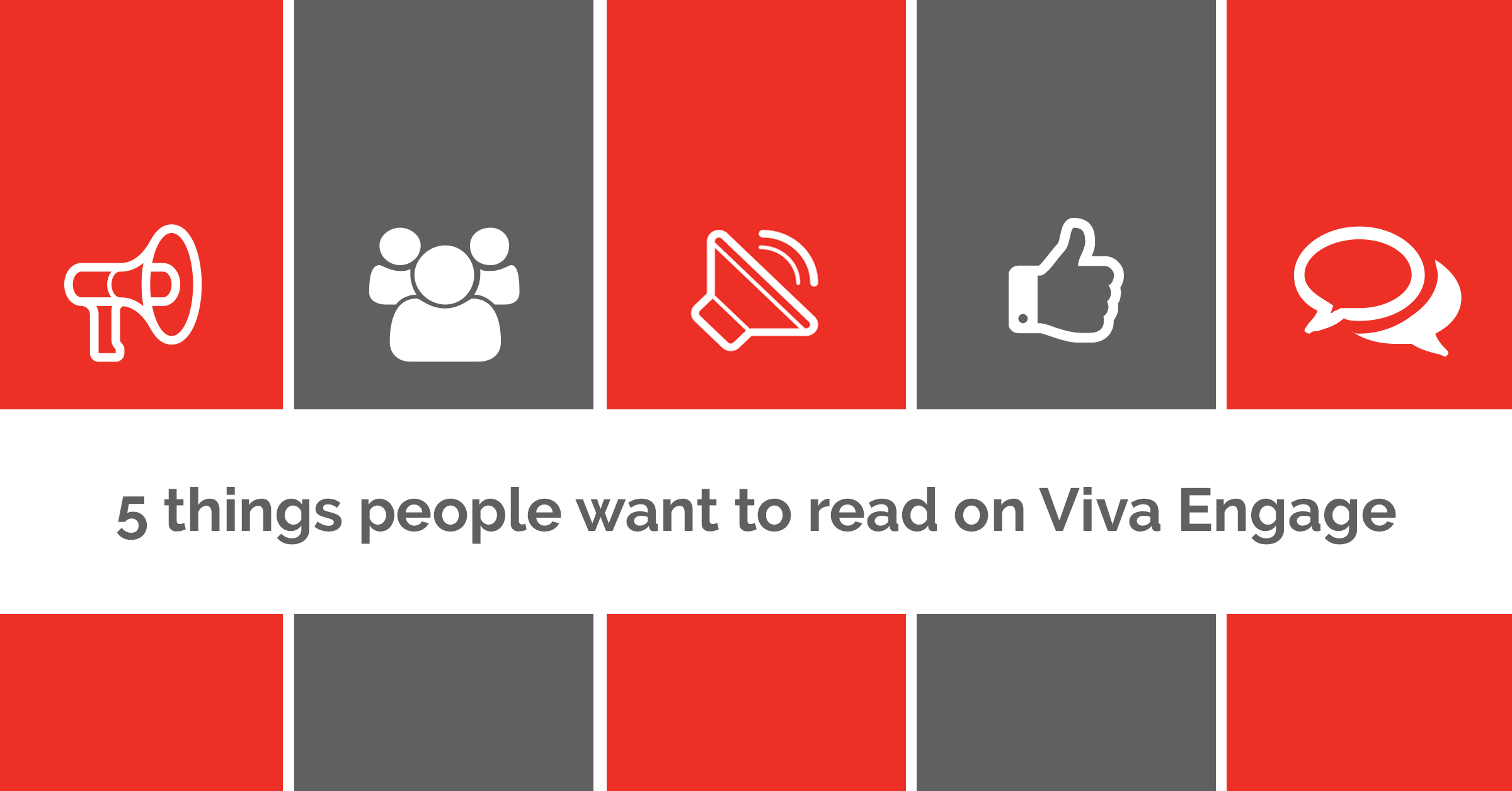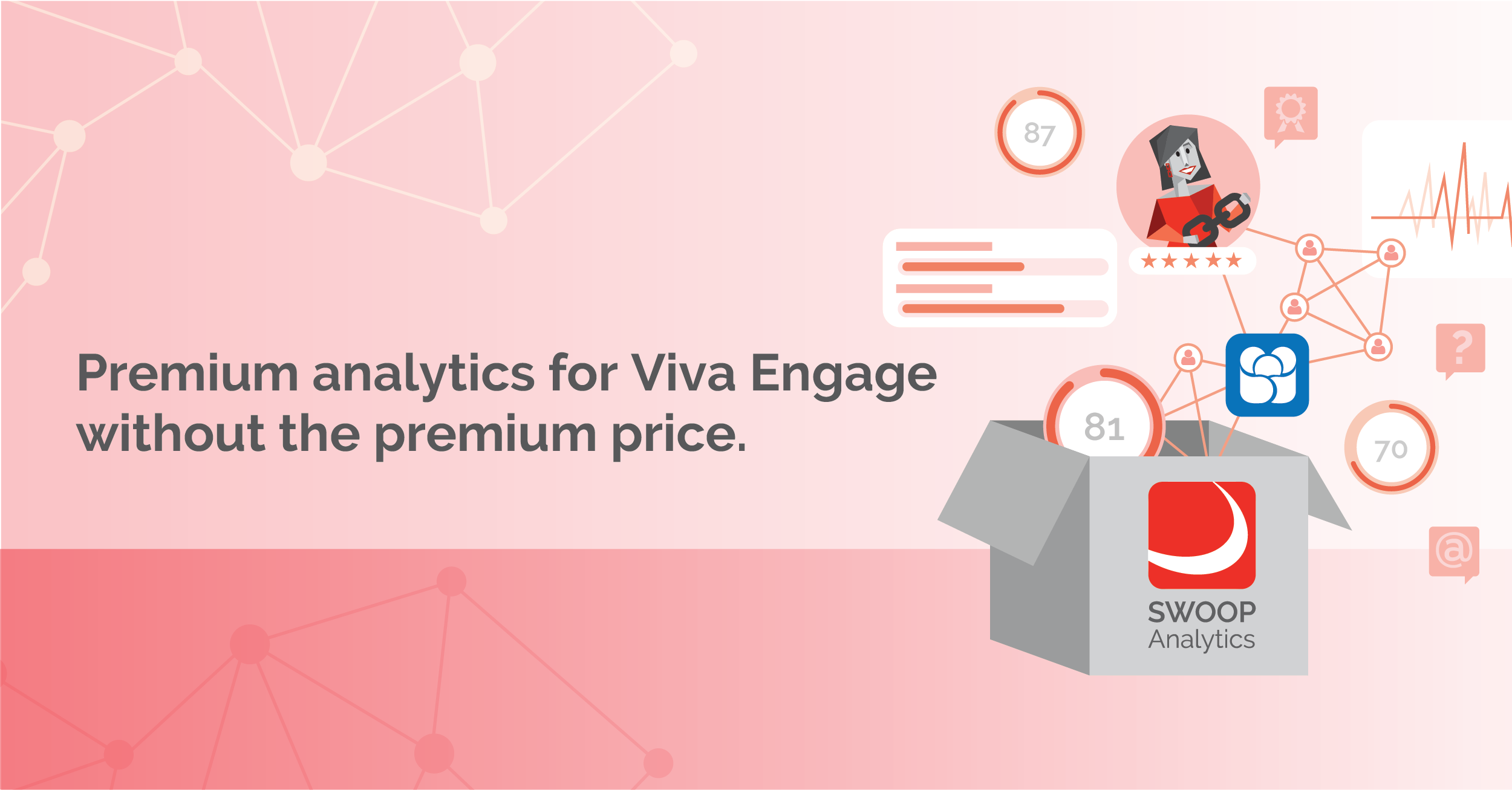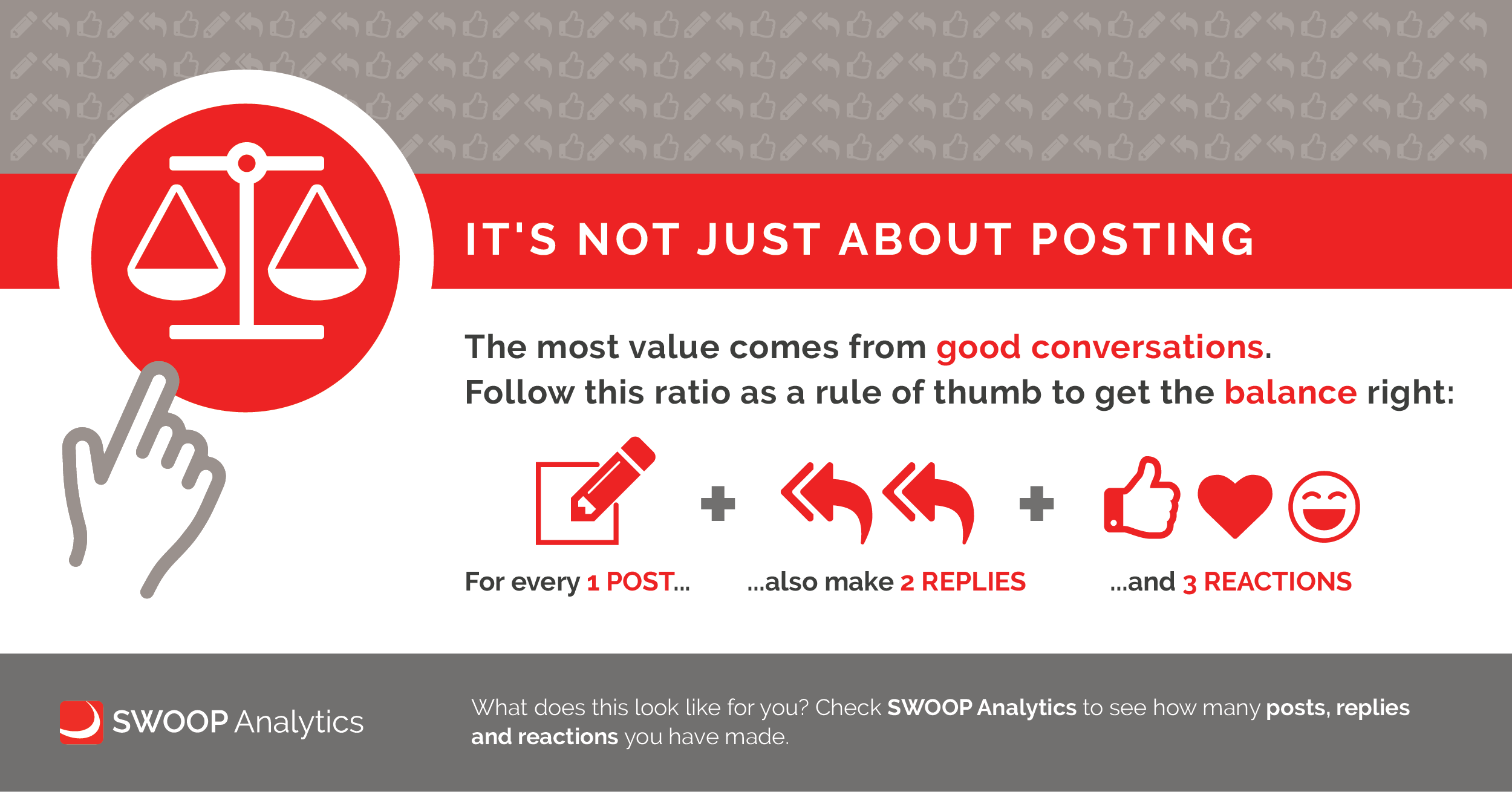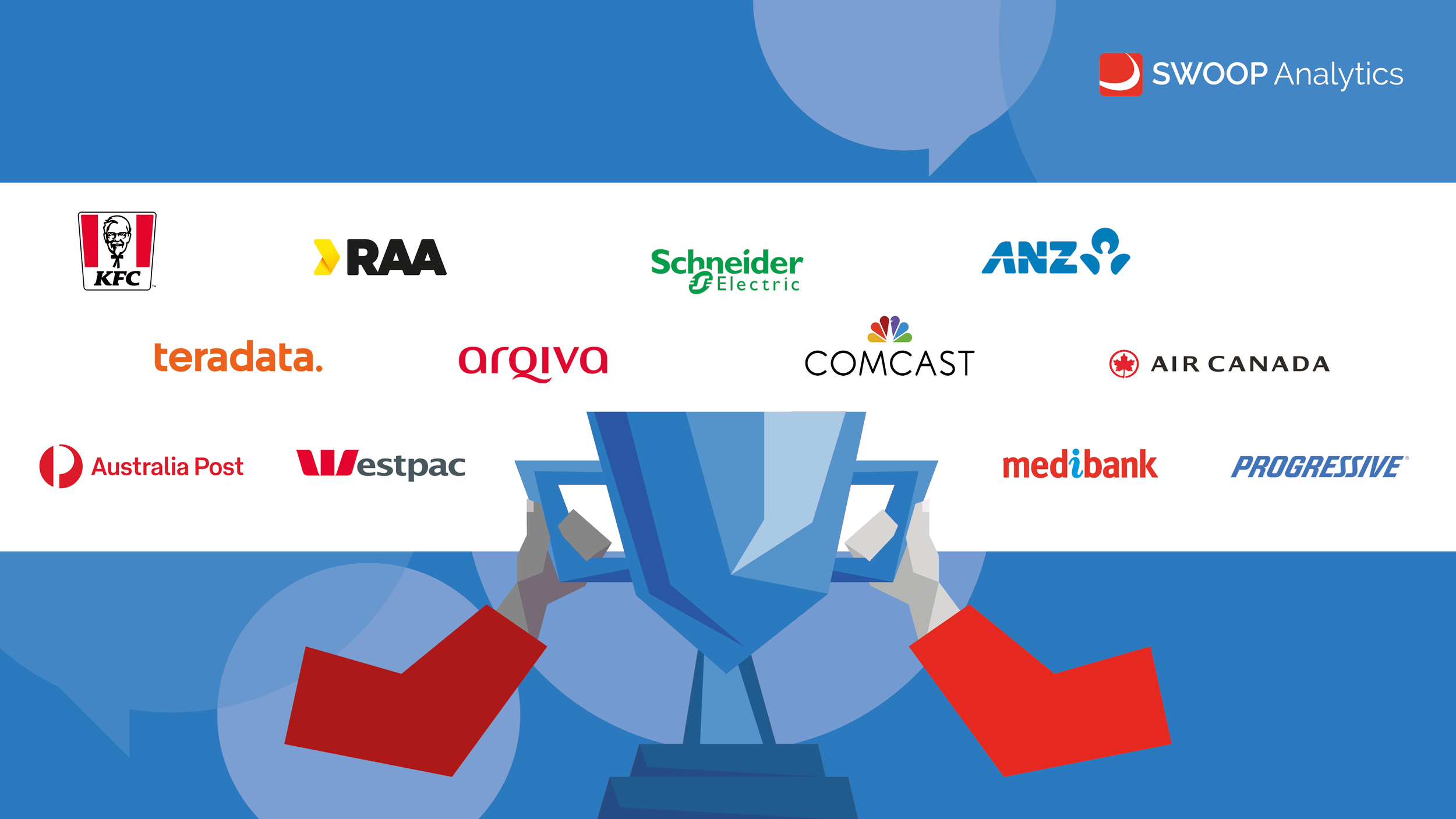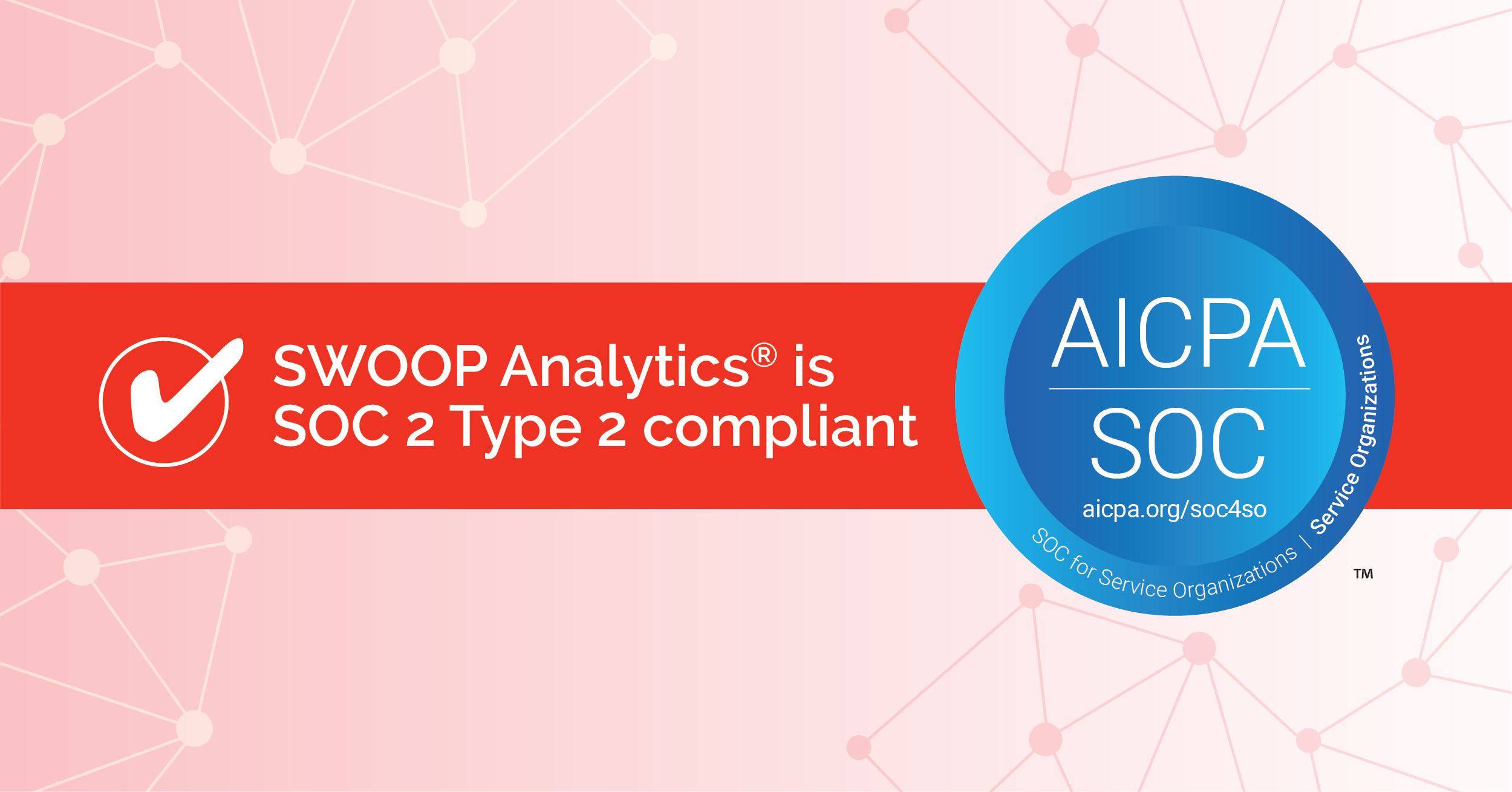
SWOOP Blog
Latest Articles
Blog Archive

Social Learning is more than just Yammer
We often have mistaken cultural beliefs that all learning happens formally. Many still have a mindset where learning means classroom. Some executives and HR leaders have the same mindset – train to change. But this is shortsighted and costly. Driving new skills and behavior change through Yammer is relatively easy and effective.

You've created a Team on Microsoft Teams: Now What?
This is the first post in a series of practical tips on how to successfully adopt Microsoft Teams in your workplace.

How Workplace is changing company culture to deliver a better product
Global creative agency We Are Social enjoys an active, productive global digital community for its 750 employees and can claim Workplace from Facebook as a truly integral part of its business and culture. We Are Social shares its experience to achieve success on Workplace.

Teams and Projects – Setting Collaboration Performance Targets
Digital teams are way too large to enjoy the benefits of being a truly high productive team. At an average size of 296 members, there is little chance of achieving the level of cohesion and productivity that more appropriately sized non-digital teams do. A fundamental shift is required in how digital teams are formed. If teams are to truly perform online, they should limit their size to less than 10 members.

How to run a successful Yammer network – tips from the experts
We’ve put together the top 6 tips to run a successful Yammer network, based on interviewing the world’s top performing Yammer networks from SWOOP’s benchmarking.

How Flight Centre used Workplace to save a man’s life
Not too many companies can claim they saved a life using their Workplace network. Global travel agency Flight Centre can.
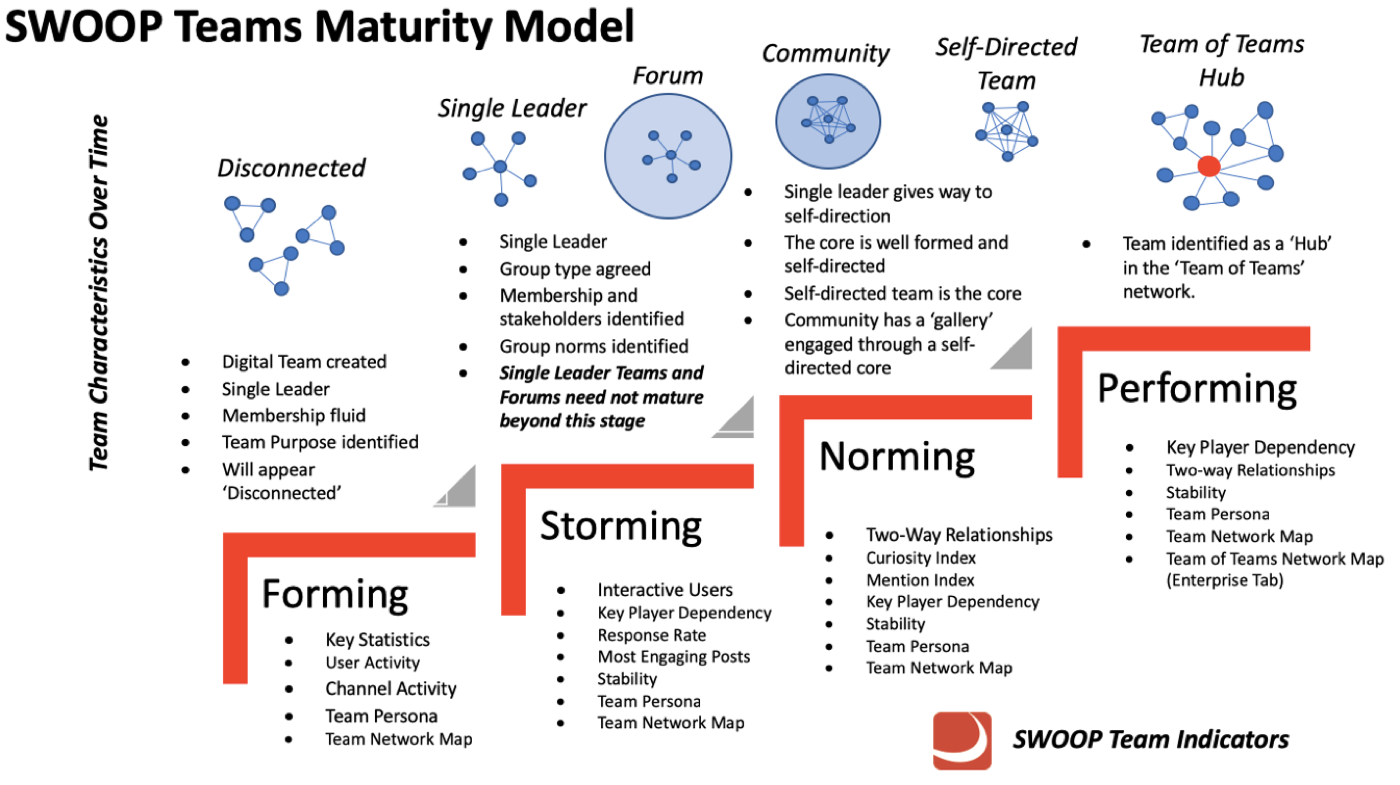
The story of a digital team – Forming, Storming, Norming & Performing
Team productivity is strongly linked to relationships formed and sustained by team members. With SWOOP Analytics’ newest product – SWOOP for Microsoft Teams – we can help you identify what type of teams you’re working with and adapt behaviours to help you reach more productive outcomes.
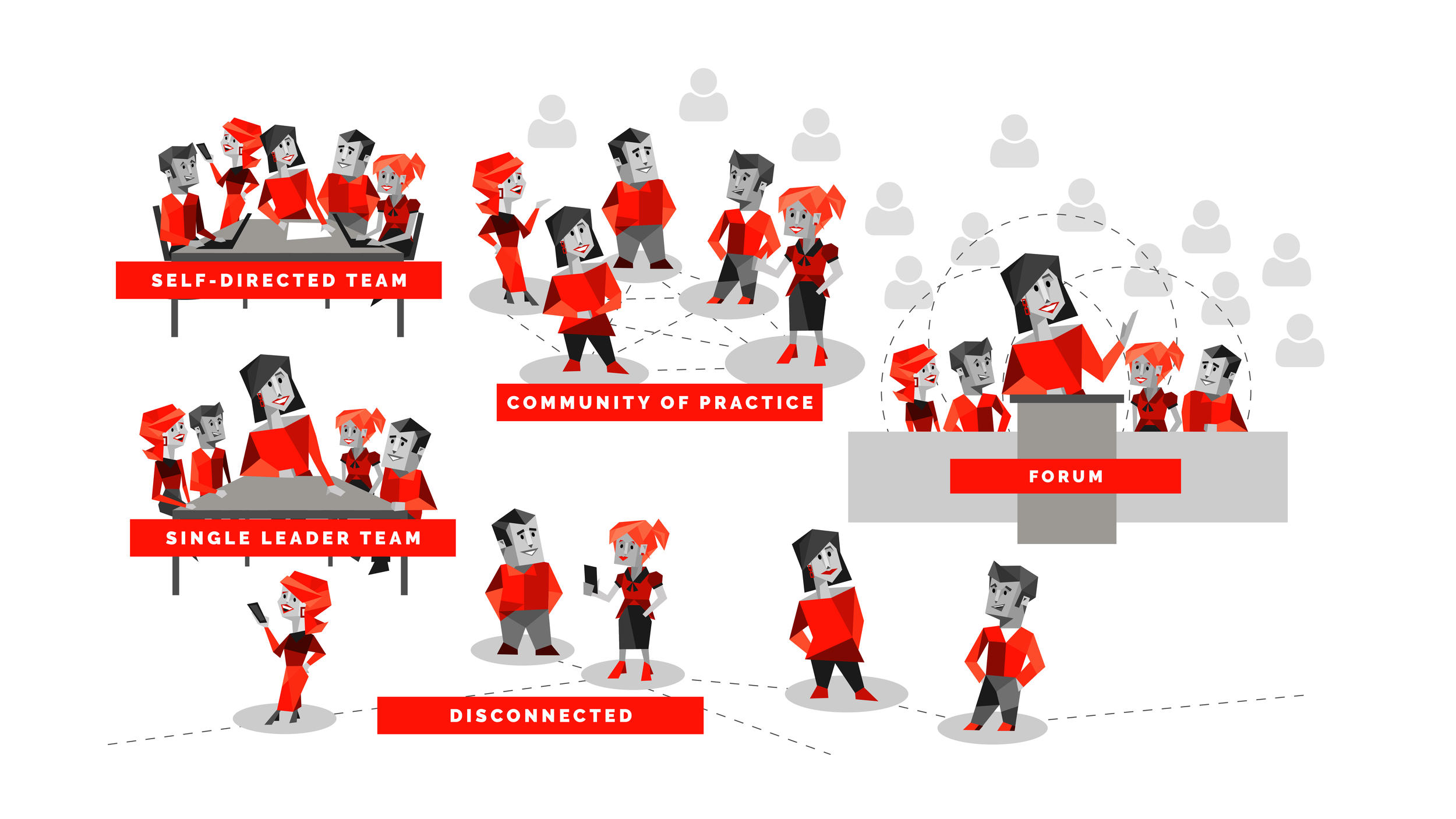
Meet our ‘SWOOP for Microsoft Teams’ Personas
Ahead of the global launch of SWOOP Analytics’ newest product – SWOOP for Microsoft Teams –on July 1, 2019, we would like to introduce you to our SWOOP for Teams personas.

How Stable is your Digital Team?
We’ve taken a deep dive to analyse more than 1,300 digital teams and discovered some surprising results. While stability is easier to achieve in small teams, stability in larger teams could impact negatively on diversity and innovation, and sometimes lead to a toxic work environment.

Will the ‘Real’ Digital Team Please Stand Up?
Other than simple reports on digital team size and number of messages shared, the team-level analytics currently available are rudimentary at best. My previous article on building effective digital teams examined research my company, Swoop Analytics, did on over 1,300 self-declared digital teams across several organizations using the Workplace by Facebook platform. The average membership from these "teams" was nearly 300 and therefore, most could not be considered real teams. Nevertheless, one would expect that many, in spite of their size, are gaining value from their use of the digital platform.

Listening to employees through Workplace and SWOOP
What do stingless bees have to do with a Workplace network? For Australian Catholic University (ACU), the stingless bees are an example of how its Workplace network has connected thousands of staff across the country and led to immediate business value.

Secrets of the world’s best Workplace networks revealed
At SWOOP we’ve recently conducted the world’s largest-ever analysis of Workplace by Facebook networks, examining 68 organisations worldwide who opted into SWOOP’s benchmarking.

NBN boss Bill Morrow shows true leadership in response to the #MeToo campaign
As stories of sexual abuse flooded social media in response to the #MeToo awareness campaign, NBN Co chief executive Bill Morrow’s thoughts went straight to his employees.

Workplace networks are growing and maturing – SWOOP benchmarking
SWOOP has conducted the world’s largest-ever analysis of Workplace by Facebook networks, examining 68 organisations worldwide who opted into SWOOP’s benchmarking. The analysis represents more than 630,000 users over a six-month period, a significant proportion of Workplace’s two million paid users, and more than 15 million online interactions, across a breadth of industry sectors and geographies.

What impact do leaders have on collaboration? Show me the numbers!
One of our most enduring observations from organisations successfully using Enterprise Social Networking (ESN) platforms is the important role the CEO and executive leaders have played in the network’s success.

Engagement At Scale: What Senior Leaders Need To Do
It is more important than ever for senior leaders to build trust by establishing two-way conversations with their people – at scale. In this article, we’ll give simple, practical and evidence-based tips for achieving this spending just five minutes per day. We’ll also show you how to measure this at the individual level.

Engagement 3.0? SWOOP has you covered
We were intrigued and somewhat excited when we saw HR guru Josh Bergin’s take on the evolution of the Employee Engagement marketplace. Bergin is an internationally renowned HR, People and Talent analyst, who recently provided his Top 5 Digital trends in HR.

How many groups should you join?
It’s a busy day, and you’re a busy person. Just how many groups can you realistically participate in on your enterprise social network? Pick a number and we’ll get back to that in a moment.

Less is Not Always More with Enterprise Social
While Enterprise Social Networking sites have taken their lead from consumer-facing Social Media platforms, there are many situations where good practices in social media just do not map over to Enterprise Social.

What Does it Take to Build an Effective Digital Team?
We recently completed what we believe is the largest study of digital team collaboration performance ever undertaken. We analyzed 1,360 digital teams from nearly 70 organizations from a full breadth of industries and geographies. The digital interactions of over 400,000 team members and nearly 2 million interactions over an extended 6-month period were analyzed. Our sample was drawn from users of the collaboration platform Workplace by Facebook, where groups have been self-identified as a team.





